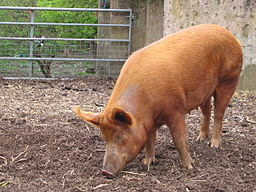Superbugs From Swine Farms?
The spread of bacteria that are immune to many types of antibiotics – so-called “superbugs” – is cause for great concern for public health. But where are these superbugs coming from and how are they spreading?

One source may be hog farms. A recent study by NC State entomologist Coby Schal and colleagues from Kansas State shows that common pests – house flies and cockroaches – living on commercial hog farms in Kansas and North Carolina contained bacteria that were resistant to antibiotics. Much of these same antibiotic-resistant bacteria appeared in swine feces found on the farms – suggesting that the flies and roaches acquired the superbugs after making contact with the feces.
How do superbugs get into swine feces? Antibiotics are used on hog farms to not only fight disease, but also to help pigs gain weight faster. When common bacteria in pig stomachs are constantly exposed to increasing amounts of antibiotics, however, the bacteria figure out quick and clever ways to outcompete antibiotics. If it was a baseball game, it’s the equivalent of bacteria tossing a shutout.
Multi-drug resistant bacteria 1, tetracycline and friends 0, if you’re keeping score at home.
This doesn’t mean that your properly cooked bacon or ham is in danger. What’s worrisome, instead, is that these common pests fly or scuttle their way into the homes and businesses down the road from the hog farms, with their superbug friends hitching a ride inside them. Human interaction is the next step, and something public-health specialists would like to prevent. Which is why, Schal says, pest-management strategies are so crucial.
- Categories:


